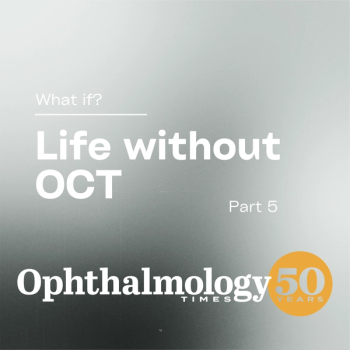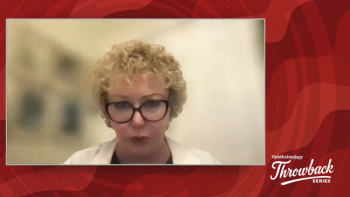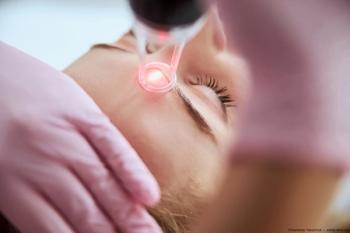
Managing dislocated IOLs with scleral suture fixation
Los Angeles-Scleral suture fixation of the IOL-capsular tension ring (CTR)-capsular bag complex is an effective option for surgical repositioning of a dislocated IOL, according to Robert K. Maloney, MD.
Los Angeles-Scleral suture fixation of the IOL-capsular tension ring (CTR)-capsular bag complex is an effective option for surgical repositioning of a dislocated IOL, according to Robert K. Maloney, MD.
“Considering the utility of this approach, surgeons should have a low threshold for placing a CTR during cataract surgery in eyes at risk for IOL dehiscence, such as those with pseudoexfoliation or a traumatic cataract,” said Dr. Maloney, Maloney Vision Institute, Los Angeles, and clinical professor of ophthalmology, David Geffen School of Medicine at UCLA, Los Angeles.
Dr. Maloney described the technique by discussing a case of a patient he saw on referral about four years after successful phacoemulsification and IOL implantation with a CTR in the right eye. Six years prior to cataract surgery, the patient had sustained a ruptured globe secondary to blunt trauma. The rupture was repaired, but the iris that prolapsed through the rupture remained incarcerated following the surgery. The pupil was also distorted.
The patient presented to Dr. Maloney with classic sunset syndrome, best-corrected visual acuity (BCVA) of 20/40, and complaints of blurred vision, a severe glare, and the inability to drive at night.
Reviewing potential approaches for managing the dislocated IOL, Dr. Maloney said he ruled out an anterior chamber IOL due to the iris defect. He also decided against using the glued IOL technique after removing the CTR-capsule bag complex given the challenge of performing the latter step.
“Suturing around the CTR to the sclera seemed to be the natural solution, but the patient’s original surgeon was worried about suturing through the prolapsed iris, which was incarcerated in the old scleral rupture,” he said. “That was not a concern for me because my plan was to create the sclerotomies 3 mm posterior to the limbus in order to suture through the pars plana.”
(Preop: Video 1 of 2) A classic sunset syndrome, with the edge of the optic barely visible above the pupil. the capsule tension ring makes an arc across the pupil at the edge of the capsular bag. There is a sectoral iris defect superonasally with iris remnant visible subconjunctivally where it prolapsed through the scleral rupture. Video Courtesy of Robert K. Maloney, MD
(Postop: Video 2 of 2) On postop day 2, the IOL is well centered on the limbus. There is an aphakic space superiorly in the area of the iris defect. The whitish hue is due to the intraoperative use of triamcinolone acetate to identify vitreous strands. Video Courtesy of Robert K. Maloney, MD
After removing the conjunctiva from the area of the planned sclerotomies, he marked two sclerotomies superonasally, 3 mm apart and 3 mm back from the surgical limbus overlying the pars plana. One of the sclerotomies was made with a 1.0-mm blade. A needle with 8-0 Gore Tex suture attached was then passed through the other mark, around the CTR and withdrawn from the eye through the primary incision.
The needle was cut off and the suture was passed back through the previously opened sclerotomy with a handshake technique. The same procedure was used on the opposite side of the IOL-capsular bag complex to secure it. Both sutures were tightened and tied episclerally, and the knots rotated through the sclerotomies to bury them.
“It is relatively easy to pass a needle through the scleral wall and then through the capsular bag,” Dr. Maloney said. “For me, this is easier than passing the needle in the opposite direction, where a blind scleral pass is needed.”
It is important not to leave suture knots on the episclera because these knots can erode over time. A Hoffman pocket can be used, but is challenging to make, he noted.
“Instead, I rotated the knots through the sclerotomy, a technique I learned from Nicole Fram, MD,” Dr. Maloney explained. “Rotation of the knots was possible here because the sutures was not knotted around the CTR.”
At follow-up two days after surgery, the lens was well centered on the limbus, and at six months, the patient had 20/25 BCVA without any glare or night-driving issues.
This article is based on a presentation given by Dr. Maloney at the 2015 meeting of the American Academy of Ophthalmology. Dr. Maloney has no relevant financial interest to disclose.
Newsletter
Don’t miss out—get Ophthalmology Times updates on the latest clinical advancements and expert interviews, straight to your inbox.



















































.png)


